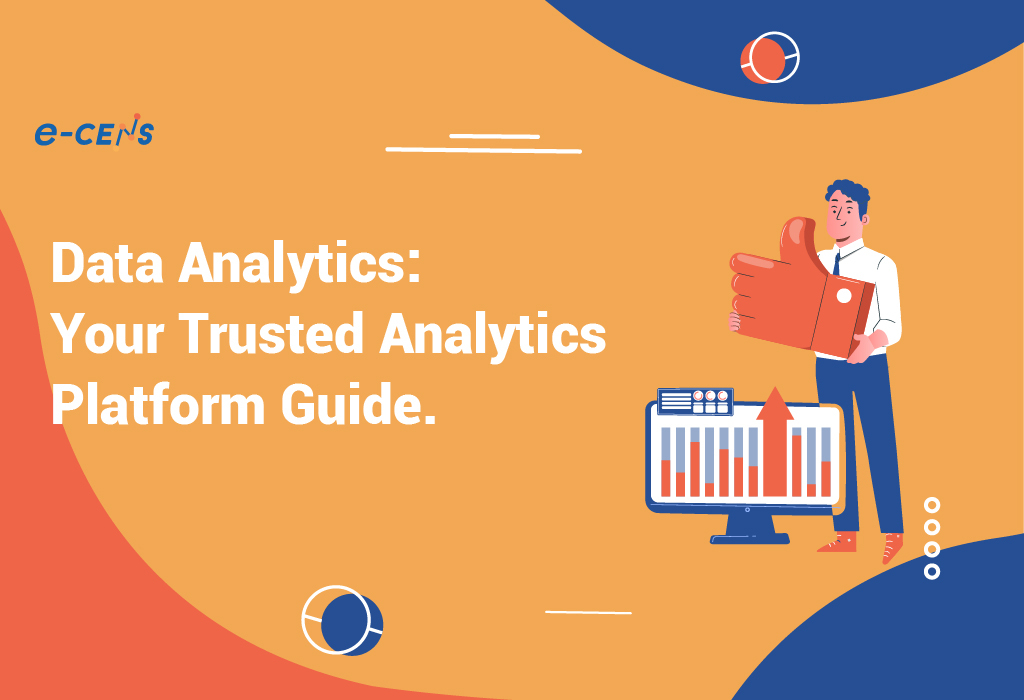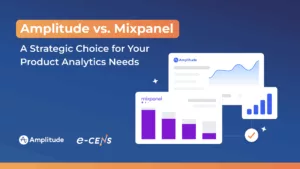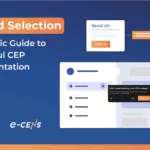Businesses today are swimming in data. From customer interactions and marketing campaigns to operational metrics and financial performance, the sheer volume is often overwhelming.
Yet, having access to data is one thing; turning it into reliable insights that drive smarter, faster business decisions across the organization is another challenge entirely.
Too often, valuable information remains locked in silos, plagued by quality issues, or inaccessible to the teams who need it most.
This guide focuses on the solution: establishing a Trusted Data Analytics Platform designed for collaborative analytics.
It’s about creating an environment where your data isn’t just available, but reliable, secure, and usable by multiple teams working together.
We’ll explore how this approach moves beyond basic reporting to truly empower your organization, breaking down departmental barriers and ensuring the power of data translates directly into actionable strategies and improved business outcomes.
Let’s look at what defines these analytics solutions, why they are critical for making informed decisions, and how you can implement one effectively.
Understanding the Core Elements of a Trusted Analytics Platform

What makes an analytics platform trusted? It comes down to several core components working together:
- Data Integration: The ability to reliably connect and ingest data from various data sources – your CRM, marketing tools, databases, spreadsheets, APIs, etc.
- Data Quality Assurance: Mechanisms to clean, validate, and standardize incoming raw data. This involves processes like data validation rules and sometimes metadata management to understand data lineage and definitions. Poor data quality is a primary reason analytics initiatives fail.
- Robust Data Security: Strong security measures are non-negotiable. This includes defined access controls (who can see what), data encryption (both at rest and in transit), and adherence to relevant compliance with industry standards (like GDPR, CCPA, SOC 2).
- Governance Framework: Clear rules and policies around how data is defined, managed, accessed, and used within the platform and the organization.
- Accessible Analytics & Visualization Tools: The platform must provide tools that allow users (not just data scientists) to explore data, perform data analytics, create visualizations, and build interactive dashboards.
- Scalability: The platform needs to handle growing data volumes and increasing user demands without performance issues.
A truly trusted analytics platform combines these elements to create an environment where data isn’t just stored, but curated and made reliable for decision-making.
How Data Quality and Security Shape Trusted Data
You cannot separate trust from data quality and data security. They are intrinsically linked.
- Data Quality: If users constantly encounter inconsistencies, inaccuracies, or outdated information, they will stop trusting the platform and the data insights it generates. Implementing rules for data cleansing and validation during data integration is crucial to ensure data accuracy and build that foundational trust. Consistent definitions (metadata management) also play a key role here.
- Data Security: A data breach instantly destroys trust, not just in the platform but potentially in the entire organization. Ensuring data security through strong access controls, proper data encryption, and regular security audits is fundamental. Users need confidence that sensitive information is protected and only accessible by authorized personnel. Without this, the platform cannot be considered trusted, regardless of its analytical power.
From Raw Data to Meaningful Insights: The Analytics Journey
Getting value from a trusted analytics platform involves a journey:
- Ingestion & Integration: Connecting diverse data sources and bringing raw data into the platform.
- Preparation & Quality: Cleaning, validating, and transforming that raw data into a usable, reliable format. This often involves data engineering efforts.
- Analysis & Exploration: Using the platform’s analytics tools and BI capabilities to query the data, identify patterns, and understand trends.
- Visualization & Reporting: Creating clear, concise dashboards and reports (data visualization) to communicate findings effectively.
- Collaboration & Action: Sharing these meaningful insights across teams to drive informed, data-driven decisions and measurable business outcomes.
A trusted analytics platform facilitates each step of this journey, turning potentially chaotic raw data into reliable, actionable insights.
How Can Collaborative Analytics Transform Your Business Outcomes?

Analytics often gets stuck in a silo – a dedicated team runs reports, and insights sometimes fail to translate into action across the business.
Collaborative analytics, facilitated by a trusted analytics platform, breaks down these walls. It’s about making data analytics a team sport, not just an spectator sport for most departments.
Empowering Teams Through Collaborative Data-Driven Workflows
A key benefit is the ability to empower teams beyond the core analytics group. When marketing, sales, product, and operations can directly access, explore, and discuss the same trusted data within a shared workflow, decision-making becomes faster and more aligned.
- Shared Understanding: Everyone works from the same numbers and definitions, reducing arguments based on conflicting reports.
- Faster Insights: Teams can often answer their own questions using user-friendly dashboards and self-service analytics tools, rather than waiting in a queue for the central analytics team.
- Integrated Action: Insights gained by one team can more easily trigger actions by another within a connected data workflow. For instance, marketing insights about a campaign’s success can directly inform sales outreach priorities.
This platform that empowers users across the organization fosters a more genuinely data-driven culture.
Share Insights Across Departments: Breaking Down Data Silos
Data silos are notorious productivity killers. Marketing has its customer data, sales has its CRM data, operations has supply chain data – and often, they don’t talk to each other effectively. A trusted analytics platform, through strong data integration capabilities, can serve as a central hub.
- Unified Views: By bringing data across different departments into one place, you can create holistic views (like a 360-degree customer view, even if imperfect) that weren’t possible before.
- Cross-Functional Analysis: Teams can analyze how activities in one area impact another (e.g., how marketing campaigns influence sales pipeline quality, or how supply chain issues affect customer satisfaction).
- Improved Communication: Shared dashboards and the ability to comment on or annotate visualizations directly within the analytics platform facilitate communication about the data, ensuring everyone understands the context when you share insights.
Breaking down these silos leads to smarter, more coordinated strategies and better overall business outcomes.
Turning Collaborative Analytics into Actionable Business Decisions
Insights without action are just expensive trivia. The collaborative nature of a good analytics platform helps bridge the gap between discovering an insight and acting on it.
- Clear Communication: Visualizations and dashboards make complex data insights easier for diverse stakeholders to understand.
- Shared Ownership: When multiple teams contribute to and consume the same analytics, there’s greater buy-in and shared responsibility for taking action based on the findings.
- Faster Iteration: Collaborative access allows teams to quickly test hypotheses, see results, and adjust marketing strategies or operational processes based on shared data.
Ultimately, collaborative analytics on a trusted platform ensures that the power of data is used not just for reporting, but for making tangible improvements and driving informed decision-making that positively impacts the business. It delivers actionable results.
What Features Should You Look for When Selecting a Trusted Analytics Platform?
When selecting a trusted analytics platform, focus on features that directly support data trust, usability, and collaboration.
- Robust Data Integration Capabilities:
- Can it connect easily to your critical data sources (databases, cloud storage, SaaS apps, APIs)?
- Does it support various data integration methods (batch uploads, streaming data, direct query)?
- Data Quality and Governance Tools:
- Are there features for data validation, cleansing, and de-duplication?
- Does it offer metadata management capabilities (data dictionary, lineage)?
- User-Friendly Data Visualization and Dashboards:
- Is the interface intuitive for different skill levels?
- Does it allow users to easily create visualizations and build interactive dashboards?
- Are there self-service BI capabilities for business users?
- Collaborative Features:
- Can users easily share insights, reports, and dashboards?
- Are there features for commenting, annotation, or discussion within the platform?
- Does it integrate with communication tools (e.g., Slack, Teams)?
- Strong Security Measures and Data Encryption:
- Does it provide granular access controls (role-based permissions)?
- Is data encryption applied both at rest and in transit?
- Does it meet relevant compliance with industry standards (SOC 2, ISO 27001, GDPR, etc.)?
- Scalability and Performance:
- Can the analytics platform handle your expected data volume and user load?
- Does it offer flexible deployment options (on-premises, cloud, hybrid)?
Considering these features will help you choose a trusted analytics platform that offers the capabilities needed to manage data effectively and foster collaboration.
How Do Leading BI Tools Like Tableau and Power BI Enable Collaborative Analytics?
Business Intelligence (BI) tools like Tableau and Power BI are often central components of a trusted analytics platform. They excel at data visualization and making data accessible, and both offer features specifically designed to support collaboration:
- Shared Workspaces & Publishing: Both allow teams to publish reports and dashboards to shared servers or cloud services (Tableau Server/Cloud, Power BI Service) where colleagues can access them.
- Commenting & Annotations: Users can often add comments directly to visualizations or dashboards within the platform, facilitating discussion around specific data insights.
- Subscription & Alerts: Team members can subscribe to reports or set up data-driven alerts, ensuring they stay updated on key metrics relevant to their roles.
- Integration with Collaboration Hubs: Power BI has strong integration with Microsoft Teams; Tableau also offers integrations with tools like Slack. This allows insights to be shared and discussed within existing team workflows.
- Real-Time Data Capabilities: Both platforms can connect to real-time data sources (depending on the source configuration), allowing teams to monitor performance and react quickly, enhancing stakeholder engagement.
While specific implementations vary, these leading BI tools provide core functionalities that empower teams to share insights derived from data analytics, moving beyond static reports towards more dynamic, collaborative decision-making.
What Are the Best Practices for Implementing a Trusted Analytics Platform?
Successfully implementing a trusted analytics platform involves more than just installing software. It requires a strategic approach focused on usability, security, and demonstrating value.
- Create a User-Friendly Analytics Environment:
- Invest in training for different user groups based on their needs.
- Develop clear documentation and standardized report/dashboard templates.
- Provide self-service options where appropriate, but ensure users understand the data they are working with (link to data dictionary/metadata).
- Make the platform easy to access and navigate (user-friendly interface).
- Ensure Data Security While Maintaining Accessibility:
- Implement robust role-based access controls – give users access only to the secure data they need for their roles.
- Regularly audit permissions and access logs.
- Clearly communicate data privacy and security policies to all users.
- Balance security needs with the goal of making trusted data accessible for collaborative analytics; don’t lock it down so tightly that it becomes unusable. This involves ensuring data security is practical.
- Measuring Success: From Data Insights to Valuable Business Outcomes:
- Define clear KPIs for the analytics initiative itself. How will you measure its success? (e.g., improved decision speed, documented cost savings or revenue gains attributed to insights, platform adoption rates).
- Track how insights derived from the platform lead to specific actions and measurable business outcomes.
- Solicit feedback from users about the platform’s usability and the value of the valuable insights provided.
- Integrating Advanced Analytics and Machine Learning Tools:
- Plan for integration with advanced analytics tools or libraries (like Python/R) if needed.
- Leverage the platform to deploy and monitor machine learning (ML) models or analytical models for tasks like predictive modeling.
- Ensure data scientists can easily access trusted data from the platform for model building.
- Using AI to Discover Hidden Patterns and Deliver Trusted Predictions:
- Explore embedded AI-driven features within the platform (e.g., anomaly detection, automated insights).
- Some platforms allow users to use natural language to query data.
- Use AI capabilities cautiously, always validating trusted predictions against business knowledge and ensuring transparency in how AI derives its findings.
Implementing a trusted analytics platform is a strategic undertaking. By focusing on user needs, balancing security with accessibility, measuring true business impact, and thoughtfully integrating advanced capabilities like ML and AI, you can build a solid foundation for data-driven decisions and achieve a significant competitive edge.






